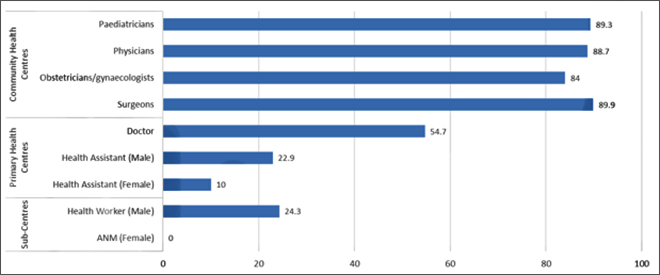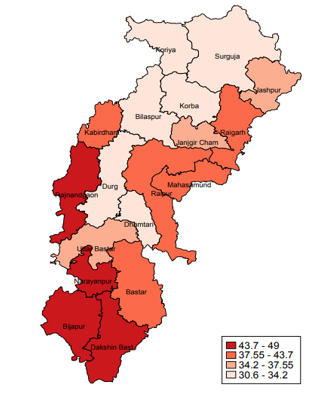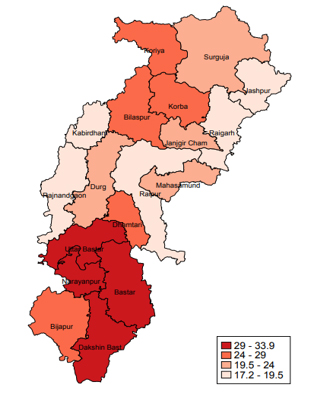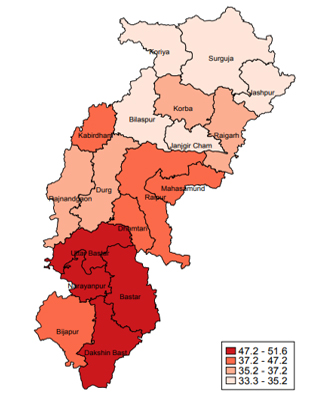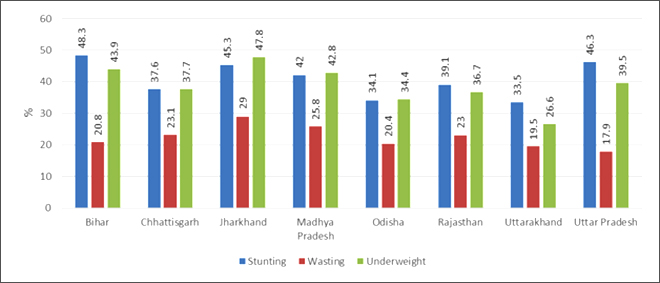New Delhi: Prime Minister Narendra Modi said at a rally in Chhattisgarh on Tuesday, November 7, that whenever the Congress comes to power, incidents of terrorism and Maoist violence increase and accused the grand old party of failing to contain Maoist violence in the poll-bound state.
“Whenever Congress comes to power, the courage of terrorists and Naxalites increases in the country… The Congress government has failed to control Naxal violence,” he said at a rally in Bishrampur, Surajpur.
“Wherever you see there is news of bombs going off in one place or the other, killings here and there. Such news would come. In whichever state the Congress is in power, crimes, loot and plunder rule. Congress has been unsuccessful in containing Naxal violence. In recent times several BJP workers have been taken away from us. A few days ago, one of our workers was shot dead,” he said.
However, a look at the Union government’s own data on Maoist violence over the years belies Prime Minister Modi’s claims about Maoist violence in Chhattisgarh. In fact, Union home minister Amit Shah, during the campaign, noted the reduction in Maoist violence and gave credit to his party.
MHA data shows reduction in Maoist violence
According to data available on the Union Ministry of Home Affairs (MHA) website, there has been a decline in the number of civilians killed by Left Wing Extremism (LWE) since 2010.
Civilian deaths have fallen consistently over the past few years, from 722 in 2010 to 82 in 2022.
| Year | Civilian deaths |
| 2010 | 720 |
| 2011 | 469 |
| 2012 | 301 |
| 2013 | 282 |
| 2014 | 222 |
| 2015 | 171 |
| 2016 | 213 |
| 2017 | 188 |
| 2018 | 173 |
| 2019 | 150 |
| 2020 | 140 |
| 2021 | 97 |
| 2022 | 82 |
Source: MHA
In terms of attacks on economic infrastructures, the number of incidents or attacks also decreased since 2010, the same website shows. The attacks decreased from 365 in 2010 to 42 each in 2021 and 2022 respectively.
| Year | Incidents/attacks on economic structures |
| 2010 | 365 |
| 2011 | 293 |
| 2012 | 214 |
| 2013 | 169 |
| 2014 | 100 |
| 2015 | 127 |
| 2016 | 79 |
| 2017 | 75 |
| 2018 | 60 |
| 2019 | 64 |
| 2020 | 47 |
| 2021 | 42 |
| 2022 | 42 |
Source: MHA
Replies in parliament also note decline in LWE incidents
In a written reply in the Rajya Sabha in the monsoon session that ended on August 11, the MHA stated that according to the Seventh Schedule of the Constitution, police and public order are with the state governments.
“However, to address Left Wing Extremism (LWE) menace holistically, Government of India (GoI) approved ‘National Policy and Action Plan to address LWE’ in 2015 envisaging a multi-pronged strategy involving security-related measures, development interventions, ensuring rights and entitlements of local communities etc. Steadfast implementation of this policy has resulted in consistent decline in LWE-related violence and its geographical spread,” said the written reply dated August 9, by MoS Home Nityanand Rai.
Rai also provided a year-wise breakup of LWE incidents and deaths since 2018.
| Year | Incidents | Deaths |
| 2018 | 833 | 240 |
| 2019 | 670 | 202 |
| 2020 | 665 | 183 |
| 2021 | 509 | 147 |
| 2022 | 413*
118** |
98 |
| 2023 (TILL JULY 15) | 273*
63** |
79 |
Source: Reply in Rajya Sabha (August 9, 2023)
*Incidents perpetrated by Left Wing Extremists
**Incidents initiated by Security Forces
In 2018, there were 833 incidents and 240 deaths in the country, followed by 670 incidents and 202 deaths in 2019, 665 incidents and 183 deaths in 2020, 509 incidents and 147 deaths in 2021. From 2022, the data shows the number of incidents perpetrated by LWEs and incidents initiated by the security forces. There were 413 incidents perpetrated by LWEs and 118 incidents initiated by security forces, while 98 deaths were recorded that year. In 2023 (till July 15), there were 273 incidents perpetrated by LWE and 63 incidents initiated by the security forces, along with 79 deaths.
In response to a question by Chhattisgarh MP Deepak Baij, Rai said in a written reply in Lok Sabha on March 21 that there “has been significant improvement” in the LWE security situation in the country in the last five years.
Rai also provided specific figures on Chhattisgarh that stated:
| Year | Violent incidents by LWE | Incidents initiated by security forces | Security forces personnel killed | Civilians killed | LWE killed |
| 2018 | 275 | 117 | 55 | 98 | 125 |
| 2019 | 182 | 81 | 22 | 55 | 79 |
| 2020 | 241 | 74 | 36 | 75 | 44 |
| 2021 | 188 | 67 | 45 | 56 | 48 |
| 2022 | 246 | 59 | 10 | 51 | 31 |
| 2023 (up to February 28) | 37 | 04 | 07 | 10 | 1 |
Source: Written reply in Lok Sabha (March 21, 2023)
Amit Shah claims credit for decline in Maoist violence
While Modi said on Tuesday that incidents of Maoist violence have increased, last month addressing a rally in Jagdalpur, home minister Amit Shah said that Maoist incidents have declined in the last nine years.
“In nine years of the Modi government, incidents of (Naxal) violence declined by 52%, deaths (in Maoist violence) came down by 70%, civilian deaths decreased by 68%, while the (number of) Naxal-affected districts declined by 62%,” he was quoted as saying.
After chairing a review meeting of LWE with state chief ministers and top security officials on October 6, the MHA in a press release also gave similar figures.
In an interview with The Wire, Baij, who is the Chhattisgarh Congress chief, accused the Union government of trying to take credit for the decline in Maoist incidents and pointed to contradictory statements by BJP leaders.
“The Union government is trying to take credit for the good work done by the Chhattisgarh government. These are double standards in the Union government’s policies and this won’t work. Amit Shah says something, [BJP president J.P.] Nadda says something else. Different leaders are saying different things and they are not on the same page on this [matter] either. But the Chhattisgarh government has done good work and there is peace in Bastar,” he said.
In February, Nadda – like Modi – claimed that Naxal activities had increased in Chhattisgarh under the Congress government.

Amit Shah at Muzaffarpur. Photo: X/@AmitShah
Union government’s role in controlling LWE
According to the MHA’s division to tackle LWE, which was created in 2006, the Union government’s role is to deal with it in a “holistic manner” while the primary responsibility lies with state governments.
“In dealing with this decades-old problem, it has been felt appropriate, after various high-level deliberations and interactions with the State Governments concerned, that an integrated approach aimed at the relatively more affected areas would deliver results. With this in view, a detailed analysis of the spread and trends in respect of Left Wing Extremist violence has been made and 70 districts in ten States have been taken up for special attention with regard to planning, implementation and monitoring various interventions. However, ‘Police’ and ‘Public Order’ being State subjects, action on maintenance of law and order, lies primarily in the domain of the State Governments. The Central Government closely monitors the situation and supplements and coordinates their efforts in several ways,” it says.
These efforts include providing the Central Armed Police Forces (CAPFs); sanction of India Reserve (IR) battalions; setting up of Counter Insurgency and Anti-Terrorism (CIAT) schools; modernisation and upgradation of the State Police and their Intelligence apparatus; reimbursement of security-related expenditure under the Security-related Expenditure (SRE) Scheme; providing helicopters, training, sharing intelligence, facilitating inter-state coordination, etc.
“The underlying philosophy is to enhance the capacity of the State Governments to tackle the Maoist menace in a concerted manner,” it says.

















